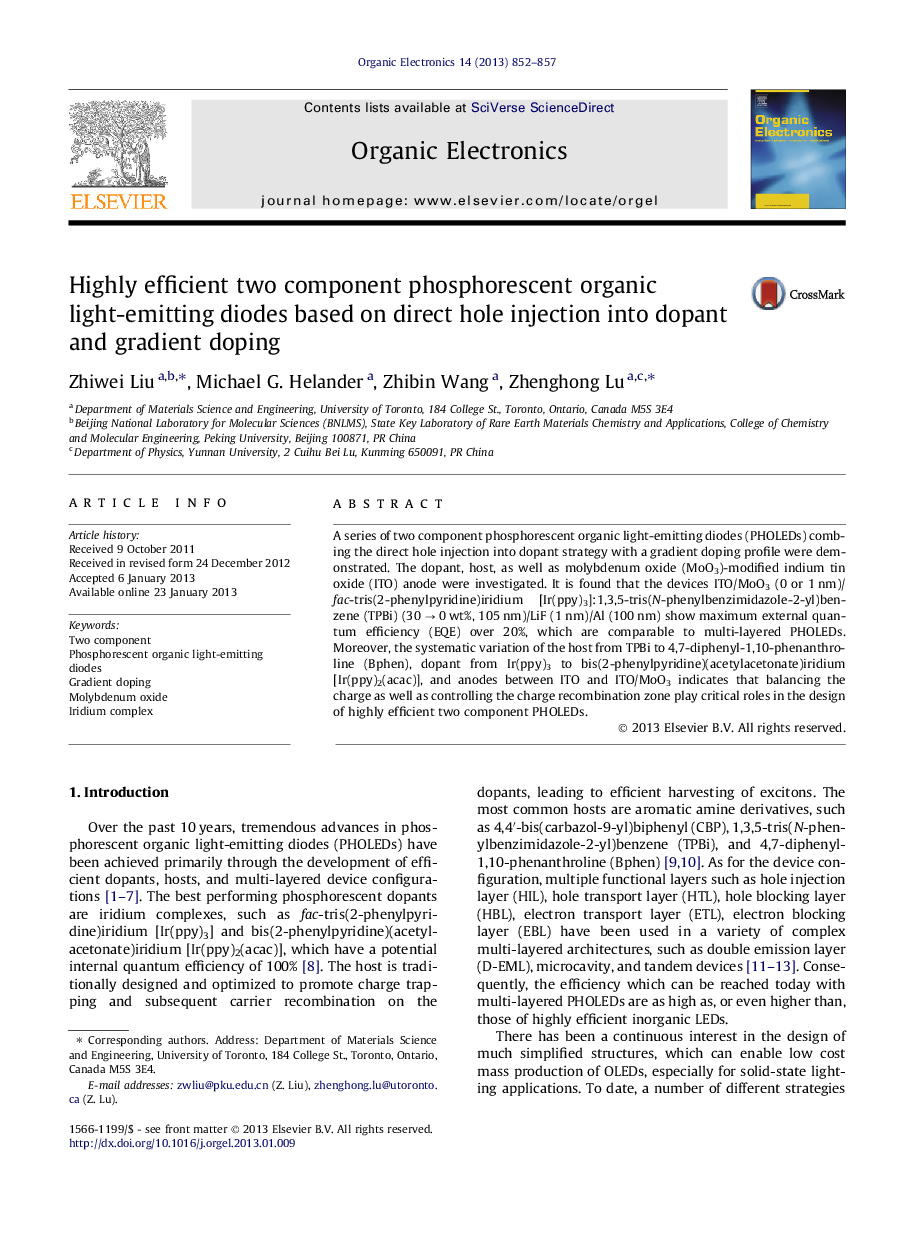| Article ID | Journal | Published Year | Pages | File Type |
|---|---|---|---|---|
| 1267423 | Organic Electronics | 2013 | 6 Pages |
A series of two component phosphorescent organic light-emitting diodes (PHOLEDs) combing the direct hole injection into dopant strategy with a gradient doping profile were demonstrated. The dopant, host, as well as molybdenum oxide (MoO3)-modified indium tin oxide (ITO) anode were investigated. It is found that the devices ITO/MoO3 (0 or 1 nm)/fac-tris(2-phenylpyridine)iridium [Ir(ppy)3]:1,3,5-tris(N-phenylbenzimidazole-2-yl)benzene (TPBi) (30 → 0 wt%, 105 nm)/LiF (1 nm)/Al (100 nm) show maximum external quantum efficiency (EQE) over 20%, which are comparable to multi-layered PHOLEDs. Moreover, the systematic variation of the host from TPBi to 4,7-diphenyl-1,10-phenanthroline (Bphen), dopant from Ir(ppy)3 to bis(2-phenylpyridine)(acetylacetonate)iridium [Ir(ppy)2(acac)], and anodes between ITO and ITO/MoO3 indicates that balancing the charge as well as controlling the charge recombination zone play critical roles in the design of highly efficient two component PHOLEDs.
Graphical abstractFigure optionsDownload full-size imageDownload as PowerPoint slideHighlights► A high efficiency (EQEmax = 21.9%, PEmax = 86 lm/W and CEmax = 74 cd/A) two component PHOLED was explored. ► Different dopants [Ir(ppy)3 and Ir(ppy)2(acac)], hosts (TPBi and Bphen), and anodes (ITO and ITO/MoO3) were compared. ► Charge balance plays a critical role in the design of highly efficient two component PHOLEDs. ► Improvement of device performance and low-cost mass production are possible.
